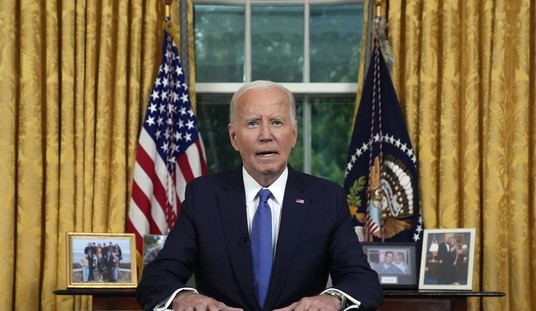The last federal execution in the United States occurred in 2003, when Gulf War veteran Louis Jones was killed by lethal injection for the 1995 kidnapping, rape and murder of a 19-year-old female soldier. He had blamed his actions on an Iraqi nerve gas. Since then there have been several state executions, but the most notable one occurred in 2014, when a botched distribution of the lethal drugs failed to kill Oklahoma inmate Clayton Lockett instantly. Forty-three minutes later and he was still writhing in pain. It outraged many Americans and then-President Obama ordered the Department of Justice to conduct an investigation into the current state of capital punishment.
That review is now complete, and back in July Attorney General William Barr directed the Federal Bureau of Prisons to adopt an Addendum to the Federal Execution Protocol and resume the capital punishment for five inmates convicted of murdering, torturing and raping their victims, including children and senior citizens.
“Congress has expressly authorized the death penalty through legislation adopted by the people’s representatives in both houses of Congress and signed by the President,” Barr said at the time. “Under Administrations of both parties, the Department of Justice has sought the death penalty against the worst criminals, including these five murderers, each of whom was convicted by a jury of his peers after a full and fair proceeding. The Justice Department upholds the rule of law—and we owe it to the victims and their families to carry forward the sentence imposed by our justice system.”
Yet, last Friday the Supreme Court sided with a lower court ruling to stall the executions.
One of the biggest issues the courts has is how these executions will be administered. In Barr's directive, he noted that the three-drug procedure previously used in federal executions will now be replaced with a single drug—pentobarbital. Pentobarbital is a sedative that slows the activity of the brain and nervous system. U.S. District Judge Tanya S. Chutkan said that the conditions are not in the public interest.
Recommended
US District Judge Tanya S. Chutkan of the District of Columbia said the public interest is not served by “executing individuals before they have had the opportunity to avail themselves of legitimate procedures to challenge the legality of their executions.”
“While the government does have a legitimate interest in the finality of criminal proceedings,” Chutkan held, the time it took to establish a new protocol “undermines its arguments regarding the urgency and weight of that interest.”
The DOJ had an answer.
“Since 2010, 14 states have used pentobarbital in over 200 executions and federal courts, including the Supreme Court, have repeatedly upheld the use of pentobarbital in executions as consistent with the Eighth Amendment."
See below for the list crimes committed by the death-row inmates. Warning: graphic content.
- Daniel Lewis Lee, a member of a white supremacist group, murdered a family of three, including an eight-year-old girl. After robbing and shooting the victims with a stun gun, Lee covered their heads with plastic bags, sealed the bags with duct tape, weighed down each victim with rocks, and threw the family of three into the Illinois bayou. On May 4, 1999, a jury in the U.S. District Court for the Eastern District of Arkansas found Lee guilty of numerous offenses, including three counts of murder in aid of racketeering, and he was sentenced to death.
- Lezmond Mitchell stabbed to death a 63-year-old grandmother and forced her nine-year-old granddaughter to sit beside her lifeless body for a 30 to 40-mile drive. Mitchell then slit the girl’s throat twice, crushed her head with 20-pound rocks, and severed and buried both victims’ heads and hands. On May 8, 2003, a jury in the U.S. District Court for the District of Arizona found Mitchell guilty of numerous offenses, including first degree murder, felony murder, and carjacking resulting in murder, and he was sentenced to death.
- Wesley Ira Purkey violently raped and murdered a 16-year-old girl, and then dismembered, burned, and dumped the young girl’s body in a septic pond. He also was convicted in state court for using a claw hammer to bludgeon to death an 80-year-old woman who suffered from polio and walked with a cane. On Nov. 5, 2003, a jury in the U.S. District Court for the Western District of Missouri found Purkey guilty of kidnapping a child resulting in the child’s death, and he was sentenced to death.
- Alfred Bourgeois physically and emotionally tortured, sexually molested, and then beat to death his two-and-a-half-year-old daughter. On March 16, 2004, a jury in the U.S. District Court for the Southern District of Texas found Bourgeois guilty of multiple offenses, including murder, and he was sentenced to death.
- Dustin Lee Honken shot and killed five people—two men who planned to testify against him and a single, working mother and her ten-year-old and six-year-old daughters. On Oct. 14, 2004, a jury in the U.S. District Court for the Northern District of Iowa found Honken guilty of numerous offenses, including five counts of murder during the course of a continuing criminal enterprise, and he was sentenced to death.
According to Solicitor General Noel Francisco, the inmates have “exhausted all permissible appeals."
The death penalty came up again at the Supreme Court on Wednesday as the justices appeared divided over the fate of an Arizona man, James McKinney, who killed two people in 1991. Up for debate was whether he deserved another sentencing hearing.
























